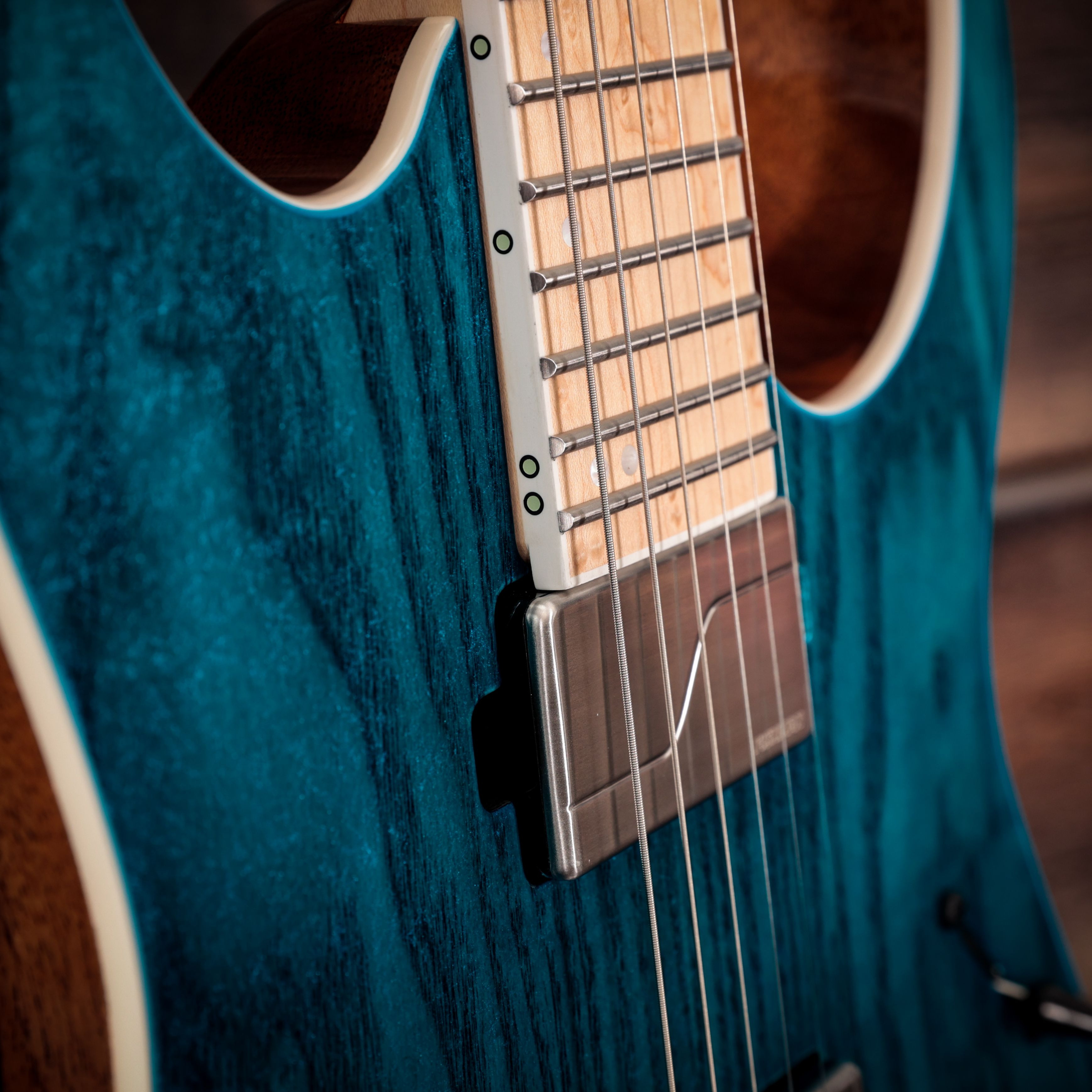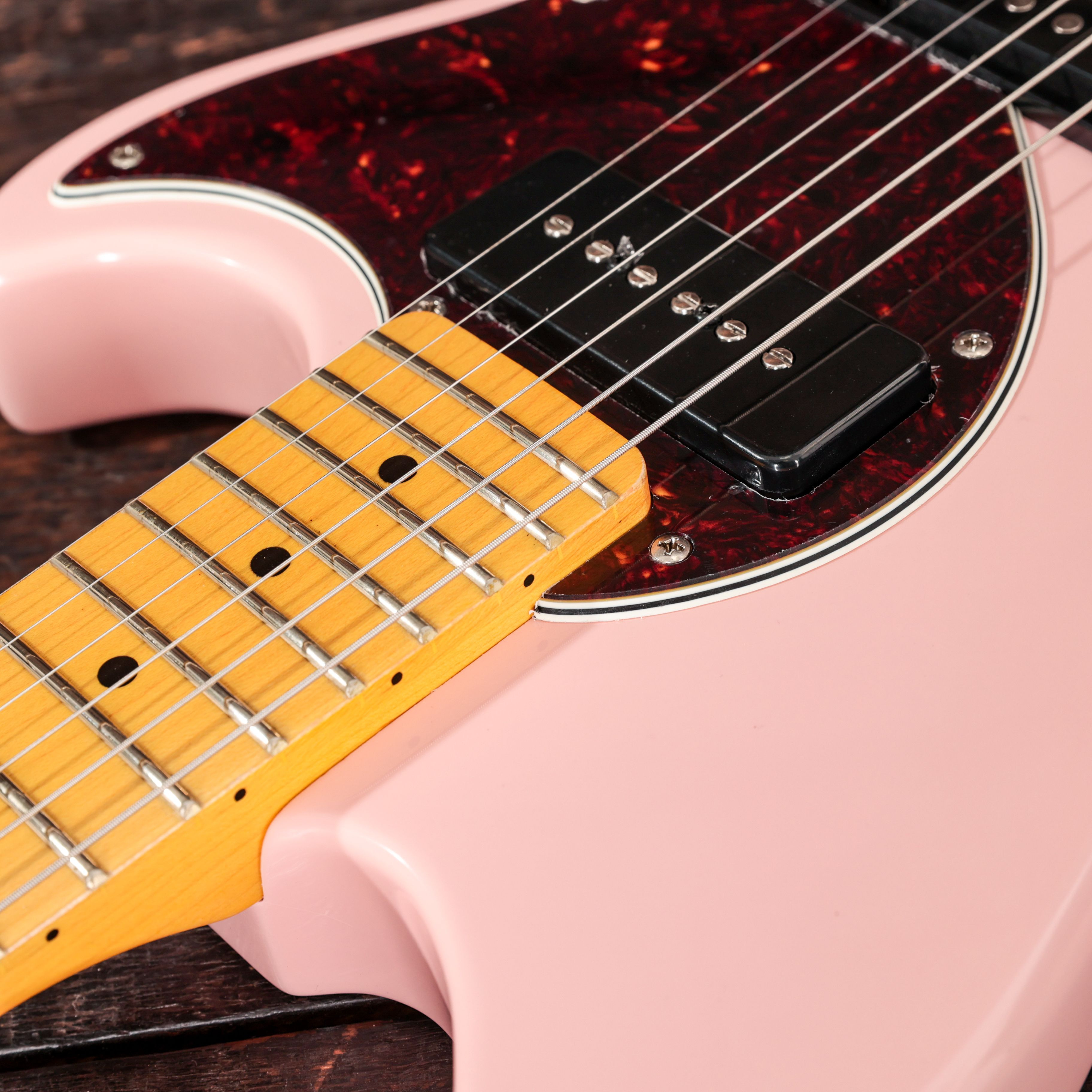Guitarists often have very specific preferences when it comes to their instruments, and the number of frets on a guitar is a detail that sparks considerable discussion. Whether your guitar has 21, 22, 24 frets, or even an extended range, the fret count significantly influences playing comfort, musical possibilities, and even the instrument’s sound. Let’s delve into the differences between guitars with varying fret numbers, particularly focusing on the common debate between 22 and 24 fret guitars.
Electric guitars are not created equal when it comes to fret count. You’ll commonly find guitars with 21, 22, or 24 frets. Vintage-inspired designs often feature 21 frets, striking a balance between tradition and functionality. The 22-fret configuration has become a popular standard, offering a familiar feel for many players across genres. For those seeking extended range and access to higher notes, 24-fret guitars are a prevalent choice, especially in modern music styles. And for players pushing the boundaries even further, some contemporary instruments boast 27 frets, unlocking even more sonic territory.
 24 fret electric guitar
24 fret electric guitar
22 Frets vs 24 Frets: Playability and High-Note Access
The most immediate difference between a 22-fret and a 24-fret guitar lies in the extended range offered by those two additional frets. A 24-fret guitar provides a full four octaves, opening up possibilities for playing higher notes. While it’s true that many guitarists may not frequently venture into the 23rd and 24th frets, their presence offers valuable “breathing room” and expanded melodic potential.
You’ll often hear of guitarists in genres like rock and metal utilizing these higher frets for soaring solos and intricate melodies. Bands like Megadeth, Avenged Sevenfold, and Children of Bodom are known for incorporating the upper register of the fretboard into their music. Some virtuoso players, such as Wes Hauch, Rusty Cooley, and Jake Bowen, even opt for custom guitars with 27 frets to explore even further sonic landscapes.
Beyond just the extra notes, many guitarists appreciate the feel of 24 frets when playing in the higher register. As you move up the neck, space becomes increasingly compressed. Reaching the 22nd fret on a 22-fret guitar can feel cramped for some players. The slight extension offered by a 24-fret neck can provide more comfortable access to those high notes, making techniques like fast runs and bends feel less restricted. Furthermore, muscle memory plays a significant role. Guitarists who become accustomed to a specific fretboard length may find switching to a different configuration, even with just two frets difference, can initially feel unfamiliar and disruptive to their playing.
 22 vs 24 frets
22 vs 24 frets
Do 22 and 24 Fret Guitars Sound Different? The Impact on Tone
Yes, guitars with 22 frets and 24 frets can exhibit tonal differences, particularly in the neck pickup position. This difference arises from the placement of the neck pickup relative to the guitar’s bridge. On a 22-fret guitar, the fretboard is slightly shorter, allowing the neck pickup to be positioned further away from the bridge. Conversely, a 24-fret guitar requires the neck pickup to be placed closer to the bridge to accommodate the additional frets without altering the guitar’s scale length.
This subtle shift in pickup placement has an impact on the sonic characteristics of the neck pickup. In general, a neck pickup positioned further from the bridge, as found on 22-fret guitars, tends to produce a “fatter,” warmer, and more rounded tone with a pronounced bass response. The increased distance allows the pickup to capture a wider range of string vibration, resulting in a fuller sound. On a 24-fret guitar, the neck pickup, being closer to the bridge, often sounds more balanced, defined, and articulate. The proximity to the bridge emphasizes higher frequencies, leading to a clearer and less bass-heavy neck pickup tone.
For guitarists seeking a wider spectrum of tonal colors, the configuration of a 22-fret guitar can be appealing. The greater tonal distinction between the neck and bridge pickups offers a broader palette to work with. The neck pickup provides a thick, rich sound ideal for rhythm playing and smooth leads, while the bridge pickup delivers a brighter, more aggressive tone perfect for cutting through mixes. While the tonal differences between pickup positions on a 24-fret guitar are more subtle, some players may prefer this balanced approach for its versatility and consistency across pickup selections.
While direct comparisons between 22 and 24 fret guitars of identical specifications are rare, manufacturers like PRS offer insightful examples. Comparing the PRS Custom 22 and Custom 24 models, which are very similar in construction and components, reveals the subtle yet noticeable impact of fret count on neck pickup tone. The Custom 22, with its 22 frets, typically exhibits a warmer, rounder neck pickup sound compared to the more articulate and defined neck pickup of the 24-fret Custom 24.
Choosing Your Fret Count: Playing Style and Preference
Ultimately, the “best” number of frets for a guitar is subjective and depends on individual playing style and musical preferences.
- 21 Frets: Often favored by players rooted in vintage styles, blues, classic rock, and those who appreciate traditional guitar designs.
- 22 Frets: A versatile choice suitable for a wide range of genres, offering a familiar feel and a slightly warmer neck pickup tone. Excellent for players who value a classic sound and comfortable access across most of the fretboard.
- 24 Frets: Popular among rock, metal, fusion, and progressive players who require extended range, easier access to high notes, and a more articulate neck pickup tone. Ideal for those who frequently solo in the upper register and appreciate a modern, versatile sound.
- 27 Frets (and beyond): Niche instruments for players pushing the boundaries of guitar technique and exploring extended ranges in genres like progressive metal and djent.
Consider your musical style, playing habits, and tonal preferences when deciding How Many Frets On A Guitar is right for you. Experimenting with guitars featuring different fret counts is the best way to discover what feels and sounds best in your hands.
